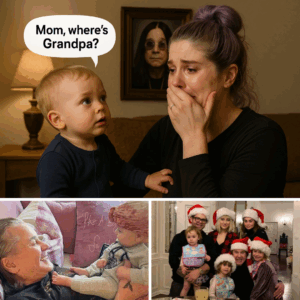Netflix’s The Sandman, adapted from Neil Gaiman’s seminal comic series, has captivated audiences with its mythic grandeur, stunning visuals, and a brooding Tom Sturridge as Dream, the cosmic ruler of the Dreaming. Season 2, split into two parts, concluded on July 24, 2025, with Part 2 (episodes 7–11) and a bonus episode on July 31, titled “Death: The High Cost of Living.” While Part 1 was criticized for its episodic sprawl and lack of momentum, Part 2 promised a tighter narrative focused on Dream’s reckoning with the Kindly Ones, the vengeful Furies of Greek mythology. However, as a quick review aptly noted, the finale, while not a disaster, feels “flat, lacking climax,” despite a tragic ending for a beloved character. This article delves into the highs and lows of The Sandman Season 2, Part 2, subtitled “A Dream Long Lacking Climax,” exploring its fidelity to the source material, standout performances, and thematic resonance with today’s world, while dissecting why its conclusion fails to deliver the emotional punch fans craved.
A Faithful Yet Mechanical Adaptation
The Sandman Season 2, Part 2 adapts the pivotal The Kindly Ones arc from Gaiman’s comics, where Dream faces the consequences of granting his son Orpheus (Ruairi O’Connor) a mercy killing, an act that violates the Endless’ rule against spilling family blood. This transgression unleashes the Kindly Ones, led by Lyta Hall (Razane Jammal), who seeks vengeance for the loss of her son, Daniel, kidnapped by Loki (Freddie Fox) and Puck (Jack Gleeson). The narrative centers on Dream’s preparations for his potential demise, naming Daniel (Jacob Anderson as an adult) as his successor, while navigating a cosmic conspiracy involving gods, demons, and his siblings, the Endless.
The show remains fiercely loyal to the comics, a double-edged sword. Fans of the source material, as noted on X, appreciated the adherence to Dream’s arc, with one user calling it “a faithful interpretation that we can always revisit in dreams.” However, this fidelity sometimes feels mechanical, as the review suggests, with the show “sticking to the main storyline of Sandman himself without changing big events.” The adaptation meticulously recreates key moments—like Dream’s confrontation with the Kindly Ones and his final conversation with Death (Kirby Howell-Baptiste)—but struggles to infuse them with the emotional weight needed for a television audience. The climactic episode, “Long Live the King,” sees the Kindly Ones devastate the Dreaming, killing beloved characters like Fiddler’s Green, Abel, and Merv. Yet, as Winter is Coming notes, the pacing drags, and the emotional impact feels muted, with “huge gaps in the storyline” that leave audiences struggling to connect.
The final episode’s reliance on extended monologues from multiple characters—six or seven, as the review quips—further saps momentum. These speeches, meant to reflect on Dream’s legacy and the nature of change, echo the comics’ philosophical tone but come off as “sleep-inducing” on screen. Unlike the comics, where Gaiman’s prose and evocative art carried such moments, the show’s dialogue-heavy approach feels like “a failed evangelical preacher’s Instagram posts,” lacking the dramatic subtlety needed to captivate. This mechanical fidelity, while satisfying purists, alienates casual viewers expecting a more dynamic climax.
Tom Sturridge: The Heart of the Dreaming
If there’s a saving grace, it’s Tom Sturridge’s mesmerizing performance as Dream. Described as “a marvel of restraint and eventual catharsis,” Sturridge transforms the stoic, aloof Morpheus into a figure of profound humanity. In Part 2, Dream grapples with his mortality, a poignant irony for an Endless, and Sturridge conveys this with subtle facial expressions and a hauntingly deep voice. His scenes with Death, particularly their final conversation in “Long Live the King,” are the emotional core of the season, with one X user calling it “a punch to the soul.” Sturridge’s ability to balance Dream’s cosmic detachment with newfound vulnerability—seen in his tearful acknowledgment of past mistakes—elevates the series above its narrative shortcomings.
Sturridge’s chemistry with the ensemble cast is equally compelling. His interactions with Delirium (Esmé Creed-Miles), whose childlike chaos contrasts Dream’s solemnity, highlight his growth from a self-absorbed ruler to a brother seeking reconciliation. Similarly, his scenes with Lucienne (Vivienne Acheampong) and the Corinthian (Boyd Holbrook) underscore Dream’s evolving relationships, making his potential end all the more poignant. As Collider notes, Sturridge’s performance “cements him as one of the best comic book castings of all time,” a sentiment echoed by fans on X who praise his “ethereal, soulful” portrayal.
Standout Performances: Loki and Puck Steal the Show
The review singles out Loki (Freddie Fox) and Puck (Jack Gleeson) as the season’s highlights, and for good reason. Their mischievous alliance, rooted in A Midsummer Night’s Dream and Norse mythology, injects chaotic energy into an otherwise somber narrative. Fox’s Loki, described as “slimier and more insidious than Tom Hiddleston’s Marvel version,” is a cunning manipulator who kidnaps Daniel to provoke Lyta and the Kindly Ones. Gleeson’s Puck, a bratty fairy with a penchant for chaos, complements Loki perfectly, their scenes crackling with dark humor and menace. One X user called their partnership “a dream within a nightmare wrapped in a prank,” a fitting description of their gleeful scheming.
Other supporting players shine as well. Jenna Coleman’s Johanna Constantine and Boyd Holbrook’s Corinthian bring unexpected chemistry, their partnership blending noir cool with supernatural grit. Ann Skelly’s Nuala, a courageous fairy rallying the Dreaming’s defenses, emerges as a quiet standout, her “defiant optimism” adding depth to the chaos. However, some characters, like Lyta Hall, feel underutilized. As Popped notes, Lyta is “mostly just a vessel for the Kindly Ones,” her grief-driven vengeance lacking the complexity needed to make her a compelling antagonist. This underdevelopment, coupled with the rushed pacing, prevents the season from fully capitalizing on its rich cast.
Visual Splendor and Thematic Depth
The Sandman remains a visual triumph, with Part 2’s production design continuing to dazzle. From the Dreaming’s ethereal castles to the Kindly Ones’ grotesque onslaught, the show’s CGI and set pieces create a “fever dream” aesthetic that rivals Watchmen or The Boys. The destruction of the Dreaming, with its collapsing landscapes and slain inhabitants, is both heartbreaking and visually stunning, as noted by The Hindu: “The production design echoes the fever dreams.” Even critics who found the narrative lacking, like The Guardian, praised the “sumptuous, lyrical” visuals that make the Dreaming feel alive.
Thematically, Part 2 explores change, mortality, and the cost of rigidity in a rapidly evolving world. Dream’s journey reflects a broader commentary on adapting to modern realities, a theme that resonates with today’s societal shifts. As the review notes, “If you don’t change, you’ll fall behind and be replaced,” a message mirrored in Dream’s struggle to reconcile his eternal duties with newfound empathy. This philosophical depth, drawn from Gaiman’s comics, is amplified by contemporary issues, such as identity and accountability, though some critics argue it feels heavy-handed. The show’s exploration of grief, particularly through Lyta and Dream, adds emotional weight, but the lack of narrative friction—Dream faces “staggeringly little resistance” to his plans—dilutes the stakes.
The Bonus Episode: A Poignant Coda
The bonus episode, “Death: The High Cost of Living,” released on July 31, 2025, serves as a palate cleanser after the main arc’s bittersweet end. Focusing on Death (Kirby Howell-Baptiste) during her centennial day as a mortal, the episode follows her encounter with Sexton Furnival (Colin Morgan), a suicidal journalist, and Mad Hettie (Clare Higgins), a 200-year-old wanderer. IGN calls it “one of the series’ best,” praising Kirby’s warm, charismatic performance and the episode’s message that “all lifetimes have meaning.” Unlike the main arc’s heavy-handed monologues, this standalone story balances humor, drama, and philosophy, offering a lighter yet profound reflection on life and mortality. Its nightclub scene, where Death debates morality with Sexton and the smarmy Theo (Jonno Davies), is a highlight, challenging viewers to reconsider simplistic notions of good and evil.
Why the Climax Falls Flat
Despite its strengths, Part 2’s climax disappoints, as the review aptly captures: “It doesn’t make us go ‘oh’ or evoke strong emotions.” Several factors contribute to this. First, the pacing issues that plagued Part 1 persist, with Winter is Coming noting that “huge gaps in the storyline” and uneven pacing disrupt the narrative flow. The Kindly Ones’ rampage, while visually striking, feels “over the top” and lacks the emotional grounding needed to make their destruction resonate. Lyta’s role as their vessel is underdeveloped, reducing her to a plot device rather than a tragic figure.
Second, the show’s fidelity to the comics, while admirable, results in a “machine-like” adaptation that prioritizes plot points over dramatic buildup. The final episode’s monologues, meant to tie up thematic threads, feel like a checklist of Gaiman’s prose rather than a cohesive climax. The A.V. Club criticizes this as “characters simply telling us what they feel,” leaving viewers “angry or, at best, bored.” Compared to No Way Home’s multiversal spectacle or Brand New Day’s practical action, The Sandman’s finale lacks the visceral payoff fans expect from a fantasy epic.
Finally, the shadow of Neil Gaiman’s sexual assault allegations, reported in January 2025, looms over the series. While showrunner Allan Heinberg insists the two-season plan was intentional, Collider notes that the controversy likely influenced Netflix’s decision to end the series. This context adds an unintended layer of unease, with some critics, like Indiewire, arguing that Dream’s arc—focused on atoning for past cruelties—mirrors Gaiman’s real-world denials, making it “deeply unpleasant” for some viewers. While the show’s quality stands on its own, this backdrop may have tempered fan enthusiasm, as seen in X posts expressing mixed feelings about the “empty” finale.
Comparisons to Other Finales
The review contrasts The Sandman’s finale with The Umbrella Academy’s “disastrous” conclusion, suggesting that The Sandman fares better by comparison. While The Umbrella Academy Season 4 was criticized for rushed pacing and unresolved arcs, The Sandman at least delivers a complete, if unsatisfying, resolution. Its focus on Dream’s internal growth and the thematic weight of change provide a “bittersweet, yet successful sendoff,” as Popped notes. Unlike Spider-Man: No Way Home, which used multiversal stakes to deliver a heart-wrenching climax, or Brand New Day’s promise of grounded action, The Sandman leans on introspection over spectacle, a choice that aligns with Gaiman’s vision but risks alienating viewers seeking a more explosive payoff.
A Bittersweet Legacy
The Sandman Season 2, Part 2 is a visually stunning, philosophically rich conclusion that stumbles in its execution. Tom Sturridge’s transcendent performance, alongside standout turns from Freddie Fox, Jack Gleeson, and the ensemble, anchors the series, while its exploration of change and mortality resonates with contemporary audiences. Yet, its mechanical fidelity, uneven pacing, and lack of a gripping climax prevent it from reaching the heights of its source material or other MCU blockbusters like No Way Home. The bonus episode, “Death: The High Cost of Living,” offers a poignant counterpoint, proving the show’s potential when it balances heart and myth.
For fans, the finale is a “poignant story about growth, grief, and the shifting sands of time,” as one X user put it, but its failure to evoke strong emotions leaves it as “a dream long lacking climax.” As Absolute Geeks notes, it “whispers, weeps, and walks away with its dignity intact,” a fitting epitaph for a series that dared to dream big but couldn’t quite wake the audience from its slumber. In a world of rapid change, The Sandman reminds us that even eternal beings must evolve—or face obsolescence. For all its flaws, it remains a haunting, beautiful farewell to the King of Dreams.
Word count: 2350




